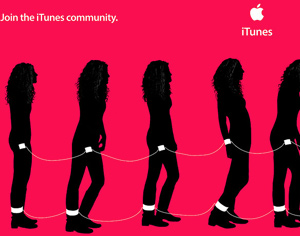From SarcMark to Sartalics; The Evolution of Communication within Social Media
 The written word is a remarkable thing; it can inspire, infuriate, shock, entertain and educate. Over the last few years writers of the online world have managed to succeed in provoking every single reaction humanly possible, but it was not always quite the reaction they desired. With social media enabling the written word to be available to all a mere second after the writer has completed, the message they wish to convey is not always the message received by the reader, which can lead to disastrous consequences.
The written word is a remarkable thing; it can inspire, infuriate, shock, entertain and educate. Over the last few years writers of the online world have managed to succeed in provoking every single reaction humanly possible, but it was not always quite the reaction they desired. With social media enabling the written word to be available to all a mere second after the writer has completed, the message they wish to convey is not always the message received by the reader, which can lead to disastrous consequences.
The instantaneous publishing of content made possible by the likes of Twitter, Facebook and various blogging platforms carries a host of benefits, but as with most things there is a downside. Firing off a funny joke you heard down the pub, a little light-hearted rant over something that has caused you frustration or simply recommending a product or service has the potential to land even the most proficient of writers in hot water; the most likely cause? They tried to use sarcasm.
The perils of misinterpreting written sarcasm have long been documented especially since the arrival of email and most recently, social media. An obvious joke can be spoken or written and the majority will understand that the intention is simply to make you laugh, but sarcasm differs from this as the wit is derived from sharp and often bitter remarks that mean the exact opposite of the words spoken, emphasized with a certain tone. This is something that is incredibly difficult to replicate within text.
A quick search online for misinterpretations of sarcasm returns an abundance of results and nearly all of them are from emails taken out of context, Facebook status updates that were meant in jest and ended up causing outrage and tweets that the tweeter found hilarious yet the followers found just plain rude.
With this in mind, frustration has quickly built with regards to the difficulty of producing satirical content and having it read in the way it was written; step forward SarcMark and Sartalics.
SarcMark
The SarcMark is a punctuation mark that looks a little like a backwards ‘e’ with a dot in the middle. Simply download the software (which at the point of writing this post is free, but it is stated on the website that this is for a limited time only) and punctuate sarcastic comments clearly.
Sartalics
Sartalics.com are campaigning for left leaning italics to be the normal practice for those wishing to convey sarcasm through writing. The website example features two tweets; one with Sartalics and one without, highlighting the fact that social media is the driving force of their idea.
With two separate entities battling it out to be crowned the saviour of written sarcasm, one big question looms over the heads of both; which one, if any, would you use? The online world may be sizeable beyond comprehension, but it still aint big enough for the both of ‘em…
Whether one emerges victorious or not, the sheer fact that changes and additions to our long established use of punctuation are now being seriously considered to accommodate the misunderstandings associated with written communication is genuine food for thought.
So, what could Sartalics and the SarcMark mean for the world of online interaction? If either of these suggestions were to become common practice, we could see changes to the way in which content is written with some believing they can get a little nearer to the knuckle than previously allowed; Sartalics and the SarkMark could end up as a scapegoat.
Whether you place your vote with team SarkMark, team Sartalics or you simply think the whole idea is ridiculous and nothing more than spoon-feeding sarcasm to the public, one thing is for sure, the rise of social media and new technology will continue to succeed in changing written communication as we know it.
This post was written by Sophie Baker-Britton, content writer for an internet marketing company that specialises in many areas including social media, guest blogging and eMarketing
cc licensed ( BY ) flickr photo shared by Martin Krzywinski


I do agree that the message from that phrase or word can be misinterpreted by some of the readers. It’s true that one method of relaying or passing the message of what you’ve written is by sarcmark and sartalics. This blog really tackles a lot of significant things. Thanks a lot for sharing this information.
Hi John,
Thanks for your comment, I think we have some exciting times ahead of us when it comes to communicating through social media platforms.